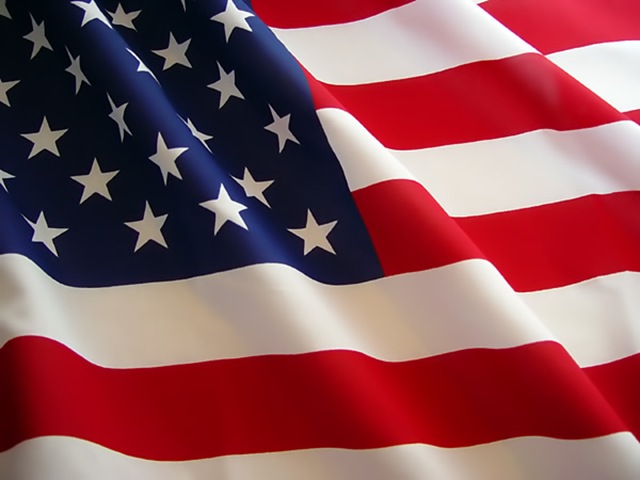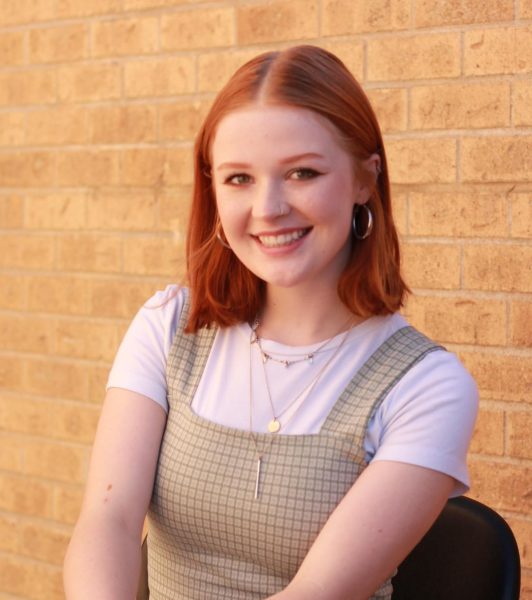To Stand or Not To Stand
Pledge of Allegiance participation depends on age and beliefs
Dec 19, 2022

Each morning after the last bell rings, a longstanding tradition of almost one hundred and thirty years occurs: The Pledge of Allegiance. A promise of loyalty and patriotism, the pledge ironically creates a division of sorts. There are students who stand for Pledge of Allegiance and those who do not.
However, standing for the Pledge is still going strong in elementary school.
“My kids have told me about high school students not standing for the pledge,” said Black Elk Elementary 2nd grade teacher Dianna Ringleb. “They say kids that do are in the minority. I was shocked, and it personally makes me sad,” she said.
In contrast to what her two high school children see at South, Ringleb has caught sight of a much different situation at the elementary school. Every morning the teacher and her second grade students rise for the pledge and speak it aloud. She said she has only had one student refuse to stand for the Pledge of Allegiance in her 22 years of teaching.
“I think they all stand because that is what is normal in elementary school and what is expected of them. Whoever does the announcements says, ‘Please stand and say the pledge,’ and they all do.”
After recognizing this constant of children rising for the tradition, Ringleb said she believes that elementary schoolers are simply too young to be influenced by any outer forces having the ability to change their minds about standing. In the future, she doesn’t forsee any change occurring for these same reasons.
However, a shift begins in middle school. Brandi Haltom, an 8th grade teacher at Andersen Middle School, said she noticed a trend of sorts beginning about two years ago.
“I have a first hour class with more students than ever before not wanting to stand,” Haltom said. “Many of them don’t recite the pledge out loud as much as they did in past years. I truly feel this is a direct result of famous athletes kneeling for the national anthem; the trend seemed to begin at that time.”
In 2016, NFL quarterback Colin Kaepernick began to famously kneel during the national anthem. He began this form of protest stating that he would not show pride for a country that oppresses black people and people of color. After this highly controversial protest, a number of athletes joined in on the movement.
High school history teacher Thomas Martin also brought up this as his belief on why some kids decide to stay seated.
“In recent years, I think that there has been more of an awareness about why a person would stay seated,” Martin said. “But the number of kids that choose to sit 10 or 20 years ago is honestly about the same that there are now in my experience as a teacher. But the shift in awareness, I think, has to do with the supercharged, hyper politicized America that we live in today. I believe that you can pinpoint this awareness back to Kaepernick kneeling during the national anthem,” Martin said.
“Fast forward a couple years later and the Black Lives Matter movement magnified the subject again. I think it is creating a sense of realization that they have really never paid attention to how some kids stand and some kids don’t. I don’t think that all of them are sitting for a grander purpose. Maybe some just don’t want to stand because they are tired, sick, or something else. Kids have gotten better in recent years about articulating their feelings on why they choose to sit and why some kids absolutely would never sit and how it is offensive to them,” Martin said.
Ever since the beginning of their sophomore year, junior Allie Bunjer has remained seated for the Pledge of Allegiance.
“It holds no sacred place in my heart. I don’t feel like mindlessly speaking some words for 10 seconds and then sitting back down if I’m not saying them whole heartedly,” Bunjer said. “I think a little daily ritual of pledging ourselves to a country I just happen to be in seems unnecessary,” they said. “I’m grateful to live in the U.S. in some ways, but not so much so I would die in the name of it. I think it is a strange tradition to hold onto. The point of keeping this tradition in place for the sake of tradition seems a little foolish. I understand it may have meaning to some, but I am not in that group,” Bunjer said.
Junior Wilson Dittman has a different outlook on the tradition and continues to stand for the pledge in high school.
“I say the Pledge of Allegiance because it’s just tradition. It is something we’ve always done throughout schooling, and I just feel like there’s no reason to not stand for it,” Dittman said. “It’s just something that we’ve always incorporated into our daily life,” he said.
Dittman explained that from a young age, he and his peers were encouraged to stand by elementary teachers, so he has remained consistent throughout his years of being a student.
However, Dittman said that he does not think that the pledge should ever be mandatory.
“I think participating in the Pledge of Allegiance is one thing that can unite everybody in schools,” he said. “It shows a love for this country, and I think schools encourage people to stand for the unity of the student body.”


